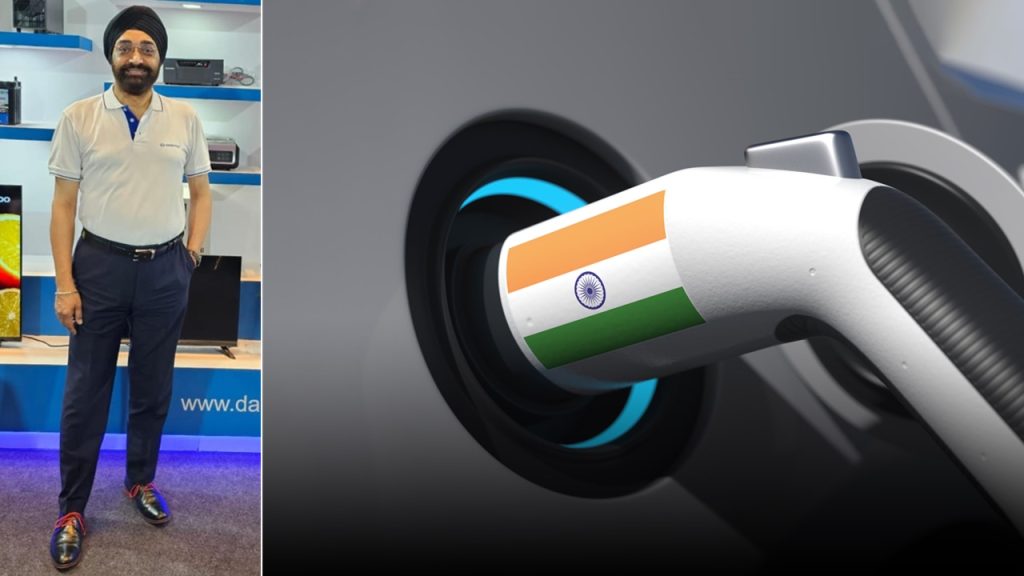The way we commute is changing worldwide, and emerging markets are leading the shift towards electric vehicles (EVs). The urgent need to address pollution and environmental issues caused by fast-paced urban development particular in India, is at the forefront of this change, taking a leading role among emerging markets in the move towards sustainable transportation.
Also read: Top Factors Enabling The Faster Adoption Of Electric Two-Wheelers In India
India Leading the Charge
India, home to some of the most polluted cities globally, is fervently embracing EVs as a solution to multiple challenges. The government has set an ambitious target to make 30% of all new vehicle sales electric by 2030. This commitment is propelled by concerns over air pollution, the desire for energy security by reducing dependence on imported oil, and the potential for economic growth through the creation of millions of jobs in the EV industry.
The driving forces behind this surge extend beyond individual buyers to include business-to-business (B2B) acquisitions by EV fleet operators. Initiatives like Faster Adoption and Manufacturing of (Hybrid &) Electric Vehicles (FAME-II) and the expansion of charging infrastructure are reshaping the automotive landscape, favouring sustainable transportation.
Environmental Impact Takes Centre Stage
A recent McKinsey Report sheds light on the factors driving the growing interest in EVs among Indian consumers. Environmental impact takes center stage, with 67% of potential buyers citing it as a significant motivator. Additionally, 26% recognize the lower total cost of ownership and reduced engine noise as key benefits of driving an EV. This highlights a shifting consumer landscape where sustainability now ranks among the top criteria for purchase decisions.
Also read: Consumer Incentives & Budget Relations: Economics of Electric Vehicles Affordability
India Achieves Milestone in EV Sales
Initiatives in India are yielding results, with electric vehicle (EV) sales surpassing the one million mark within just nine months in 2023. This remarkable achievement underscores the rapidly increasing adoption of EVs in the country. As of September 19, data from the Ministry of Road Transport and Highways’ Vahan Dashboard reveals that 1,037,011 EVs were registered, comprising a substantial 6.4% of total automobile sales for the year.
Other Emerging Markets to Watch
India is not the sole torchbearer in the emerging market EV space; other countries are making significant strides as well. China, already the world’s largest EV market, demonstrates a government committed to further expansion. Brazil boasts a large and growing EV market, driven by government incentives and falling battery costs. Mexico, a major auto manufacturing hub, is witnessing a shift towards EVs. Indonesia, home to the world’s largest nickel reserves, a key component of EV batteries, is positioning itself as a major player in the EV supply chain.
Challenges and Opportunities for Emerging Markets
Despite the potential for emerging markets to drive EV adoption, challenges persist. The high upfront cost of EVs remains a concern, as they are still more expensive than gasoline-powered vehicles. The lack of a well-developed charging network is crucial for widespread EV adoption.
Consumer hesitancy persists due to range anxiety, as they fear running out of power before reaching their destination. Additionally, many in emerging markets lack the necessary financing for EV purchases.
Opportunities abound as well. Rapidly falling battery costs make EVs more affordable. Emerging markets foster innovative companies developing new and affordable EV technologies. Learning from developed economies’ mistakes, emerging markets can skip unnecessary steps, contributing to the rapid advancement of EV adoption.
India’s EV Market Potential
India’s unique factors position it as a prime candidate for rapid EV adoption. With a large and growing population, the country is creating a huge demand for vehicles, with EVs poised to capture a significant market share. Rising disposable incomes make EVs more affordable for a larger segment of the population. Falling battery costs enable increased affordability for consumers.
The government’s commitment, backed by policy initiatives and financial incentives, including subsidies and tax breaks, further propels India’s EV market potential. Investment in a nationwide charging network addresses range anxiety, a significant concern for potential EV buyers. Beyond cars, two-wheeler and three-wheeler EVs offer more accessible options, contributing to a diverse and widespread adoption.
India’s thriving startup ecosystem plays a crucial role in developing innovative and affordable EV technologies. Rich in renewable energy resources and key EV battery components, such as nickel, India is well-positioned for sustainable and environmentally friendly EV production. Investment in skill development programs ensures a readily available pool of professionals to support the growing EV industry.
Conclusion
India and other emerging markets can lead the electric mobility revolution by tackling challenges, seizing opportunities, and encouraging innovation. This effort can result in a cleaner, more sustainable, and equitable future for transportation. The future of mobility lies in electricity, and emerging markets are laying the groundwork for a transformative and sustainable transportation system.
This article is authored by H. S. Bhatia, the Managing Director of Kelwon Electronics & Appliances Pvt. Ltd., and DAEWOO India. All views are personal.

